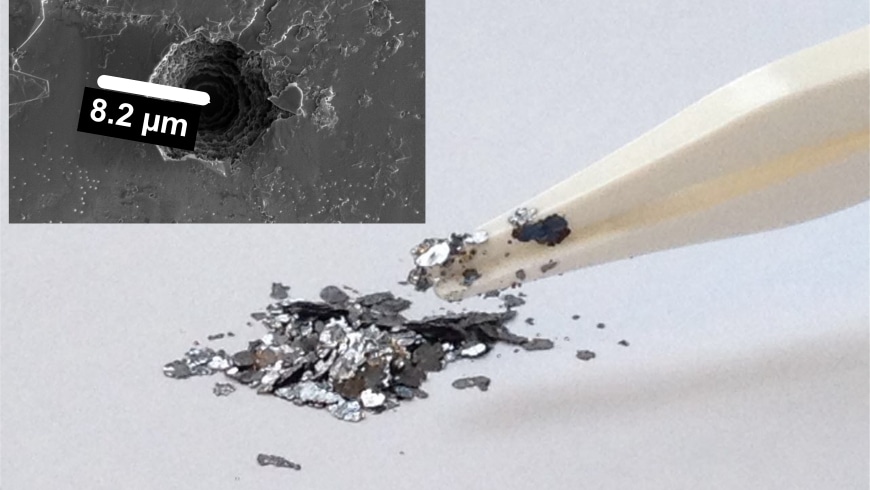Oct 12 2017
With the cost of raw materials increasing and lithium ion batteries continuing to be flammable, are there any alternatives? The answer is yes. Researchers at Empa and ETH Zürich have come up with potential approaches as to how batteries can be produced from scrap metal and waste graphite.
 Kish graphite is a waste product from steel production. It could be used to make a cheap rechargeable battery out of abundant materials. Image: Empa / ETH Zürich
Kish graphite is a waste product from steel production. It could be used to make a cheap rechargeable battery out of abundant materials. Image: Empa / ETH Zürich
Kostiantyn Kravchyk works in the Maksym Kovalenko group, which is based both in Empa’s Laboratory for Thin Films and Photovoltaics and at ETH Zurich. The main aim of the two Researchers at the Empa branch is to create a battery from the most commonly available elements in the Earth’s crust, such as aluminum or magnesium.
Even if the anode is made of pure metal, these metals are capable of providing a high level of safety. This also means that batteries could possibly be assembled in a simple and inexpensive manner and the production could even be upgraded quickly.
To run such batteries, the liquid electrolyte should contain special ions that do not form a kind of melt by crystallizing at room temperature. This “cold melt” is covered in a thick mantle of chloride ions, where the metal ions move back and forth between the anode and the cathode. Another method is to use large yet lightweight and metal-free organic anions.
Although this does not come without a problem – when the battery is charged, where are these “thick” ions supposed to go? What could be the ideal cathode material? For the purpose of comparison: the cathode is made of a metal oxide in lithium ion batteries and this metal oxide can effortlessly absorb the tiny lithium cations during charging. However, this does not work for such large ions. The large anions also have an opposite charge to the lithium cations.
Battery turned “upside down”
In order to overcome this issue, Kovalenko’s research group came up with a unique solution: the team turned the principle of the lithium ion battery upside down. In standard Li-ion batteries, the anode or the negative pole is made of graphite material, whose layers (in a charged state) have the lithium ions. In contrast, the graphite is used as a cathode, or the positive pole, in Kovalenko’s battery and in-between the graphene layers, the thick anions are deposited. The anode is made of metal in Kovalenko’s battery.
While looking for the “right” graphite, Kravchyk made an extraordinary discovery: he observed that waste graphite developed in steel production, called ”kish graphite”, serves as an excellent cathode material but so does the natural graphite – provided it is supplied in coarse flakes and not into folded, non-flake shapes or ground too finely.
This is because the layers of graphite are open at the edges of the flakes allowing the thick anions to slip into the structure much more easily. However, the fine-ground graphite that is generally employed in lithium ion batteries is not suitable for Kovalenko’s battery: this is because when the graphite particles are ground, the layers are creased similar to crumpled-up paper. This crumpled graphite can be penetrated by only the small lithium ions and not by the thick anions of the new battery.
The graphite cathode battery made from raw, natural graphite flakes or steel production “kish graphite” could become highly cost-effective and it can also last for a long time, if the first experiments are anything to go by. For a number of months, a lab system was able to withstand thousands of charging and discharging cycles
“The aluminum chloride – graphite cathode battery could last decades in everyday household use,” explains Kravchyk and adds “similar demonstrations, but further increased battery voltages, without compromising capacities, and of even lighter elements are on the way and will offer further increase in energy densities from current 60 Wh kg-1 to above 150 Wh kg-1”